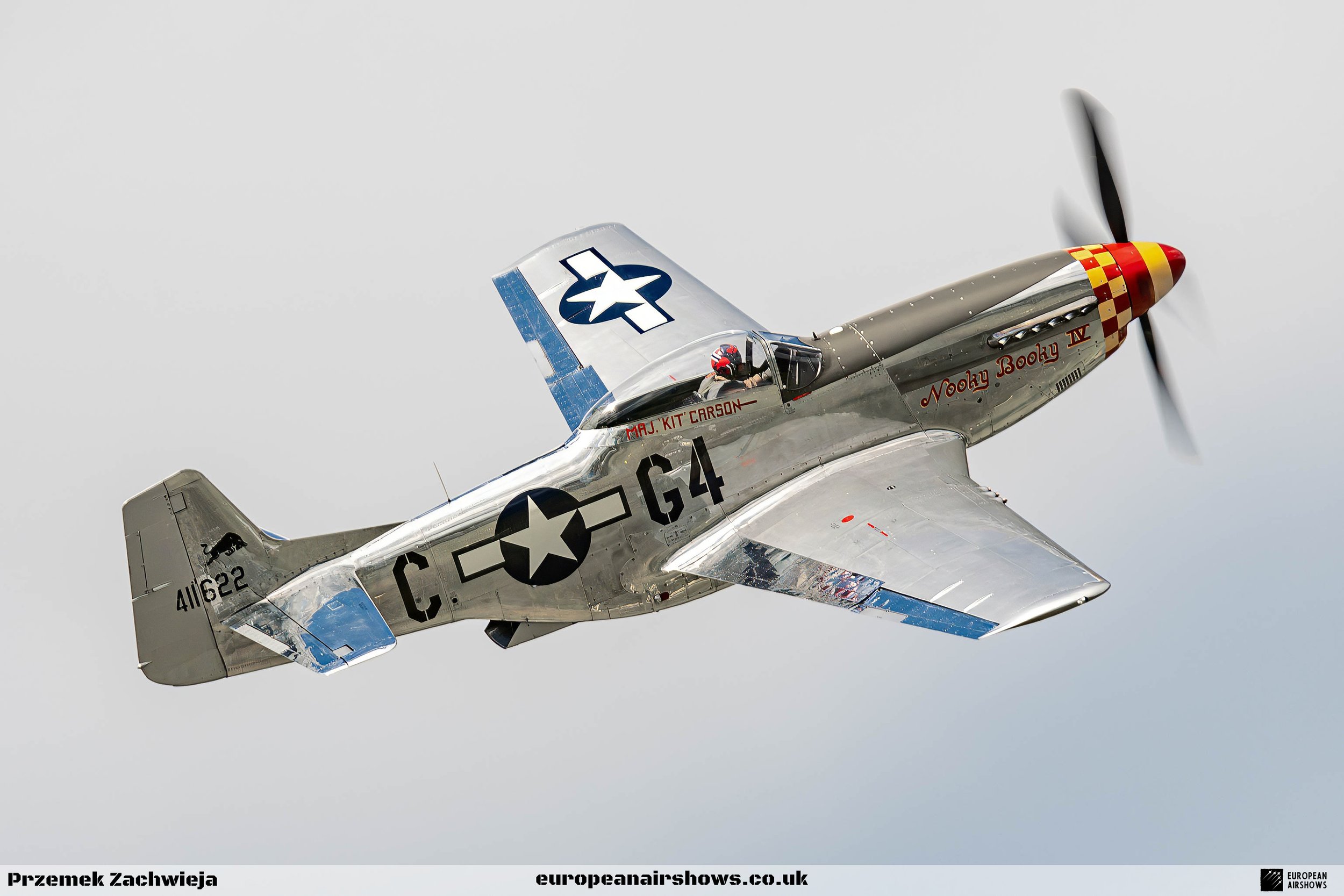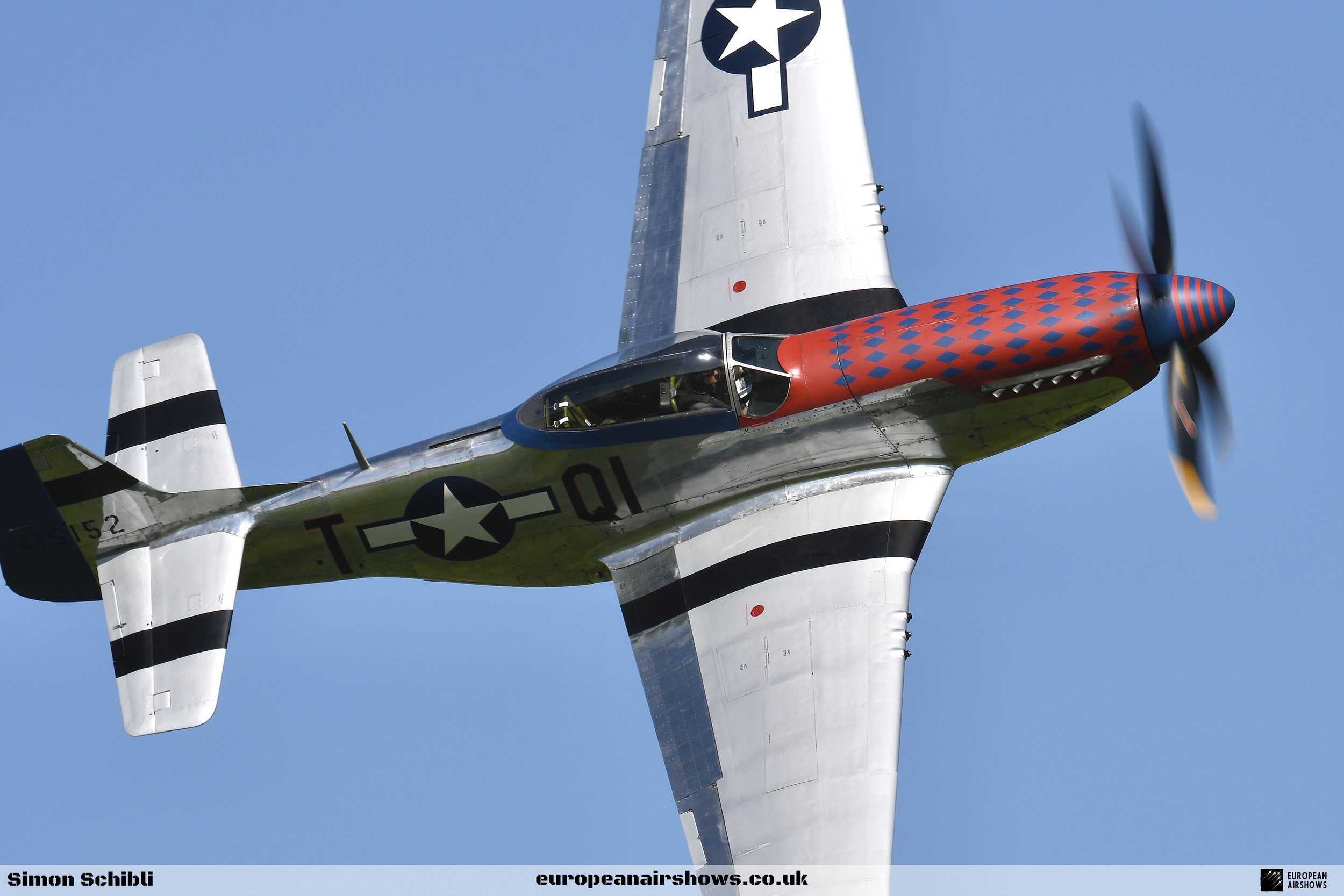
October 26 / North American P-51 Mustang first flight
First Flight 26 October 1940
North American P-51 Mustang
The North American Aviation P-51 Mustang is an iconic American long-range, single-seat fighter and fighter-bomber that played a crucial role during World War II and the Korean War, among other conflicts. The genesis of the Mustang can be traced back to April 1940, when North American Aviation (NAA) designed the aircraft in response to a requirement from the British Purchasing Commission. The commission initially approached NAA to manufacture Curtiss P-40 fighters under license for the Royal Air Force (RAF). However, NAA, under the leadership of James H. Kindelberger, proposed a more modern fighter design instead of building an outdated model from another company.
The prototype, designated NA-73X, was completed on September 9, 1940, just 102 days after the contract was signed, and it took to the skies for its maiden flight on October 26, 1940. The Mustang was initially powered by the Allison V-1710 engine, which lacked a turbosupercharger or a multi-stage supercharger, limiting its high-altitude performance. Despite this, the RAF found the aircraft to be highly effective in tactical reconnaissance and fighter-bomber roles, designating it the Mustang Mk I.
In mid-1942, a significant development occurred with the Rolls-Royce Mustang X project, which involved replacing the Allison engine with a Rolls-Royce Merlin 65 two-stage inter-cooled supercharged engine. This modification dramatically improved the Mustang’s performance at altitudes above 15,000 feet without compromising its range. The positive test results led North American to begin converting several aircraft into the P-51B/C models, known as the Mustang Mk III in British service. These models became the first long-range fighters capable of competing with the Luftwaffe’s fighters.
The definitive version, the P-51D, was powered by the Packard V-1650-7, a license-built version of the Merlin 66 engine, and was armed with six .50 caliber AN/M2 Browning machine guns. Starting in late 1943, the P-51B and P-51C models, supplemented by the P-51D from mid-1944, were used by the United States Army Air Forces (USAAF) Eighth Air Force to escort bombers on raids over Germany. The RAF’s Second Tactical Air Force and the USAAF’s Ninth Air Force also used Merlin-powered Mustangs as fighter-bombers, contributing to Allied air superiority in 1944. The Mustang saw action in various theaters including North Africa, the Mediterranean, Italy, and the Pacific, with Mustang pilots claiming to have destroyed 4,950 enemy aircraft during World War II.
At the onset of the Korean War, the Mustang, now redesignated F-51, served as the primary fighter for the United States until jet fighters like the North American F-86 Sabre took over. The Mustang then transitioned to a specialized fighter-bomber role and remained in service with some air forces until the early 1980s. After the Korean War, the Mustang found new life as a popular civilian warbird and air racing aircraft.
The design and development of the Mustang began in earnest in 1938 when the British government, under Sir Henry Self, sought to organize the manufacturing and supply of American fighter aircraft for the RAF. At the time, the options were limited, with the Curtiss P-40 Tomahawk being the closest match to European standards. However, the Curtiss-Wright plant was already at capacity, leading Self to approach North American Aviation, which was then supplying the T-6 Texan trainer to the RAF.
NAA President “Dutch” Kindelberger proposed that NAA could design a better aircraft using the same Allison V-1710 engine rather than manufacturing P-40s under license. John Attwood of NAA spent considerable time with British engineers discussing the specifications, leading to the purchase of P-40 drawings and data from Curtiss. The British Purchasing Commission approved the detailed design drawings, and the Mustang project officially commenced on May 4, 1940, with an order for 320 aircraft placed on May 29, 1940.
The NA-73X prototype incorporated several innovative features, including a wing designed with laminar flow airfoils developed in collaboration with the National Advisory Committee for Aeronautics (NACA). This design minimized drag at high speeds. Another significant feature was the cooling arrangement positioned aft, which reduced fuselage drag and took advantage of the Meredith effect, providing slight jet thrust from heated air exiting the radiator. The fuselage was constructed using conic sections for smooth, low-drag surfaces, and the airframe was divided into five main sections for ease of production.
The prototype NA-73X was rolled out in September 1940 and first flew on October 26, 1940, with test pilot Vance Breese at the controls. The aircraft featured a semi-monocoque fuselage constructed entirely of aluminum and was armed with four .30 caliber AN/M2 Browning machine guns in the wings and two .50 caliber AN/M2 Browning machine guns mounted under the engine.
Despite initial limitations, the Mustang’s performance below 15,000 feet impressed the RAF, leading to the suggestion of fitting it with the Rolls-Royce Merlin 61 engine. The Merlin 61 dramatically improved high-altitude performance, and the subsequent development of the XP-51B prototype with the Packard V-1650-3 engine led to the production of the P-51B model. The P-51B’s design included a four-bladed Hamilton Standard propeller and additional internal fuel capacity, significantly extending its range.
The Mustang’s success was cemented with the P-51D model, which featured further refinements and became a key asset in achieving Allied air superiority during World War II. The Mustang’s legacy continued through the Korean War and beyond, solidifying its place as one of the most iconic and effective fighter aircraft in aviation history.
Mustang Facts
Rapid Development: The prototype for the P-51 Mustang, designated NA-73X, was completed in just 102 days after the contract was signed, a remarkably short development period, especially during wartime.
Laminar Flow Wing Design: The Mustang’s wing was designed using laminar flow airfoils, which were developed in collaboration with the National Advisory Committee for Aeronautics (NACA). This design reduced drag and significantly improved the aircraft’s high-speed performance.
Meredith Effect: The Mustang’s innovative cooling system took advantage of the Meredith effect, where heated air exiting the radiator provided slight jet thrust, reducing overall drag and improving performance.
Versatile Engine Adaptation: Initially powered by the Allison V-1710 engine, the Mustang’s performance was significantly enhanced when it was fitted with the Rolls-Royce Merlin engine, leading to the development of the P-51B/C and P-51D models.
Long-Range Capability: The P-51D Mustang’s internal fuel capacity was increased by adding an 85-gallon fuel tank behind the pilot, which allowed it to escort bombers deep into enemy territory, a critical factor in achieving air superiority over Europe.
Record-Breaking Production: During World War II, North American Aviation produced more than 15,000 P-51 Mustangs, making it one of the most mass-produced fighter aircraft of the war.
High Kill Rate: Mustang pilots claimed to have destroyed 4,950 enemy aircraft during World War II, making it one of the most successful fighter aircraft in terms of aerial victories.
Service Beyond World War II: The Mustang remained in service well into the early 1980s with various air forces around the world, despite the advent of jet fighters, demonstrating its enduring effectiveness and versatility.
Civilian Warbirds and Air Racing: After its military service, the Mustang became a popular aircraft in civilian hands, particularly in the warbird community and air racing circuits, where its performance and historical significance were highly valued.
Iconic Design Influence: The P-51 Mustang’s design and engineering innovations influenced future aircraft development, particularly in terms of aerodynamics and cooling systems, leaving a lasting legacy in aviation history.







































